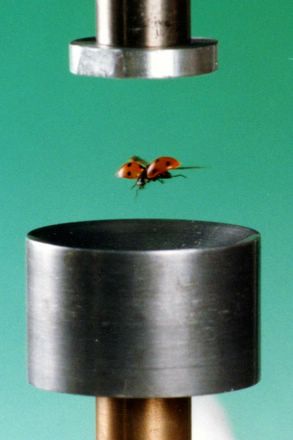“What will happen if a living animal is put into the acoustic field? Will it also be stably levitated?", asked researcher Wenjun Xie, a materials physicist at Northwestern Polytechnical University.
From Live Science:
Xie and his colleagues employed an ultrasound emitter and reflector that generated a sound pressure field between them. The emitter produced roughly 20-millimeter-wavelength sounds, meaning it could in theory levitate objects half that wavelength or less.
After the investigators got the ultrasound field going, they used tweezers to carefully place animals between the emitter and reflector. The scientists found they could float ants, beetles, spiders, ladybugs, bees, tadpoles and fish up to a little more than a third of an inch long in midair. When they levitated the fish and tadpole, the researchers added water to the ultrasound field every minute via syringe.
The levitated ant tried crawling in the air and struggled to escape by rapidly flexing its legs, although it generally failed because its feet find little purchase in the air. The ladybug tried flying away but also failed when the field was too strong to break away from.
The editors at Live Science note that acoustic levitation has been used for many years. Watch a video of a micro-gravity experiment for a NASA-related project done in 1987 by David Deak:

